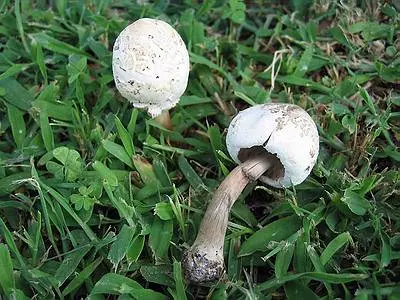Morgan’s umbrella (Chlorophyllum molybdites)
- Division: Basidiomycota (Basidiomycetes)
- Subdivision: Agaricomycotina (Agaricomycetes)
- Class: Agaricomycetes (Agaricomycetes)
- Subclass: Agaricomycetidae (Agaricomycetes)
- Order: Agaricales (Agaric or Lamellar)
- Family: Agaricaceae (Champignon)
- Genus: Chlorophyllum (Chlorophyllum)
- Type: Chlorophyllum molybdites (Morgan’s Parasol)
 Description:
Description:
The cap is 8-25 cm in diameter, brittle, fleshy, globose when young, then procumbent or even depressed in the center, white to light brown, with brown scales that merge together in the center. When pressed, it turns red-brown.
The plates are free, wide, at first white, when the fungus ripens it is olive green, which is its characteristic distinguishing feature.
The stalk is slightly expanded towards the base, whitish, with fibrous brownish scales, with a large, often mobile, sometimes falling off double ring, 12-16 cm long.
The flesh is white at first, then becomes reddish, then yellowish at the break.
Spread:
Morgan’s umbrella grows in open areas, meadows, lawns, golf courses, less often in the forest, singly or in groups, sometimes forming “witch rings”. Occurs from June to October.
Distributed in the tropical zone of Central and South America, Oceania, Asia. Quite common in North America, found in the area of New York and Michigan. Common in northern and southwestern United States. It is found in Israel, Turkey (mushrooms in the photographs).
Distribution in Our Country is not known.









